
Johns Hopkins University Coronavirus Pandemic Map
The latest front-line reports from the battlefield of humanity with the pandemic of the coronavirus COVID-19 indicate the transfer of the main theater of undeclared war overseas there are 560 thousand patients in the USA.
The states that were most recently affected by the pandemic have mobilized all resources to fight the plague of the 21st century. The situation in the UK is still critical - the growth of infected and deaths remains high.
In Spain and Italy, the first European countries that felt the horror of the coronavirus, mortality and infections is reducing. Here, the air temperature increased + up to 18-22 ° С.
The source of the pandemic, China has fallen into the background, if, without finally defeating the infection, then at least today is number one in curbing the disease. The situation is stable and the socio-economic life of China is beginning to come to its senses. The air temperature in this country during the day is around + 20-28 ° C.
The countries of the former USSR have low morbidity and mortality rates in the range of a couple of thousand and several hundred. Noticeable growth in Russia, which entered the offseason, is a favorable time for the multiplication of viruses. Here, about 19 thousand are considered patients. In the European part of Russia, the temperature is favorable for coronavirus - + 3-12 ° C. The coming 30 days are difficult - the average temperature in Moscow is within + 9 ° С.
Hot African countries can be called the most prosperous, almost unaffected by the coronavirus war. It is mostly over + 30 ° C.
The temperature factor gives hope for a more effective fight against the pandemic. With the onset of hot weather in countries where the pandemic dictates the conditions, one can expect a noticeable decrease in the spread of coronavirus and its neutralization.
A comparison of the Johns Hopkins University coronavirus pandemic world map and the Euronews weather map provides a cautious basis for concluding that air temperature is associated with pandemic dynamics. The higher the temperature, the less disease and vice versa.
Chinese scientists claim that coronavirus is best transmitted at a temperature of +5 - 8.7 ° C and remains active at a temperature of about four degrees for two weeks.
At + 15 ° C, its activity decreases and at a temperature of +22 ° C and humidity of 40 - 50%, the virus remains on the surfaces for up to 5 days. At a temperature of +38 ° С and a humidity of 95%, COVID-19 completely loses its activity.
Coronavirus COVID-19 dies in the body at temperatures above +37 ° C. That is why doctors do not advise to bring down the temperature if it is kept within +38 - 38.5 ° С. Thus, the body fights the virus.
The decline in morbidity in Europe observed in recent days coincides with a rise in temperature in the western European part of the continent
In many cases, the virus spread actively at a temperature of 4-10 degrees. A slowdown in distribution went with the rise in air temperature. How we can observe it in Spain, Italy and others. Of course, one must take into account the unfolding epic of the fight against coronavirus and the application of a set of measures, the main of which are restrictions on the movement of citizens.
The change of pessimism to optimism is indicated not only by the results in China, Spain, Italy, but also by the optimistic forecast of US President Trump, who now does not exclude the successful outcome of the fight against the pandemic in the near future. Earlier, Trump talked about the possible millions of coronavirus deaths in the United States.
Scientists attribute the low pandemic in the former USSR to the mandatory tuberculosis vaccination for 80 years. There was such a mandatory practice in the West, and in most countries of the world. Only Britain has recently begun to vaccinate infants against tuberculosis. These vaccines were not used in hot countries of Africa, Southeast Asia, India, where there is a low level of pandemic, and especially in hot Africa. This indirectly also indicates the paramount importance of the temperature factor.
Based on the above arguments, one can expect a noticeable decrease in the spread of coronavirus with increasing air temperature and its conservative nature in the summer. However, this is only a period to gain time for the use of a vaccine that is being developed in different countries. Without it, closer to winter, a pandemic can once again declare itself in large scale.
Comparison of the Johns Hopkins University Coronavirus Pandemic World Map and Euronews Weather Map on April 12, 2020
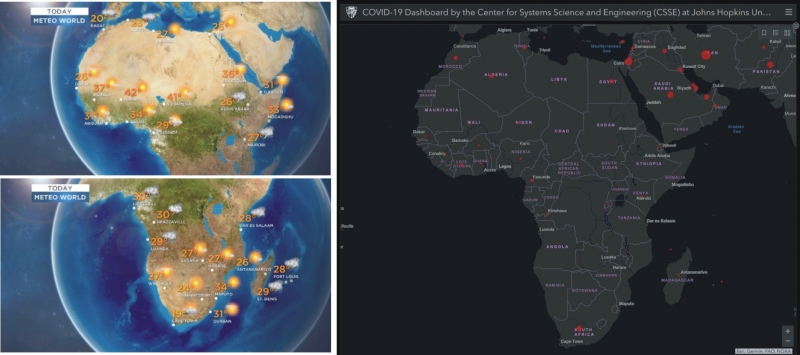
Africa
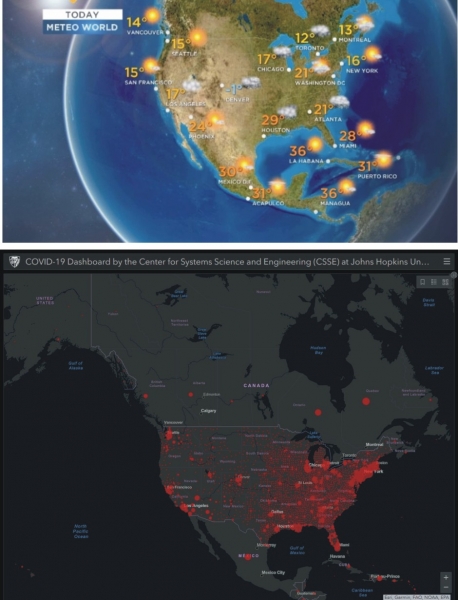
North America
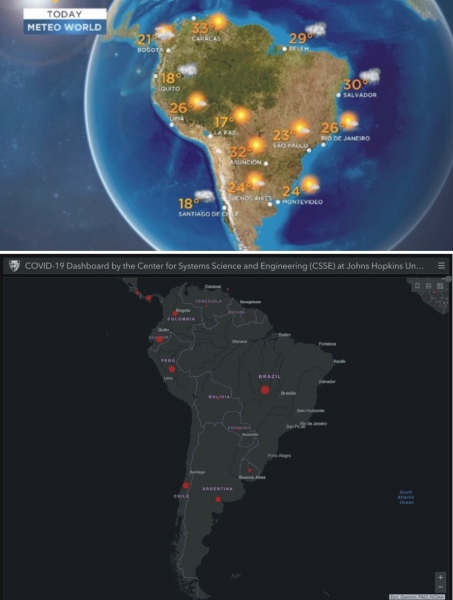
South America
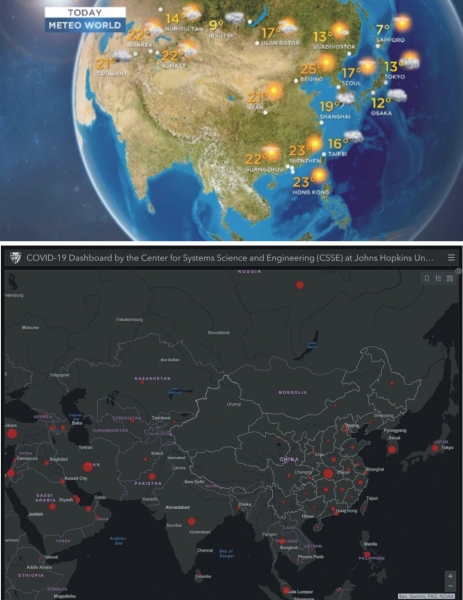
Southeast Asia
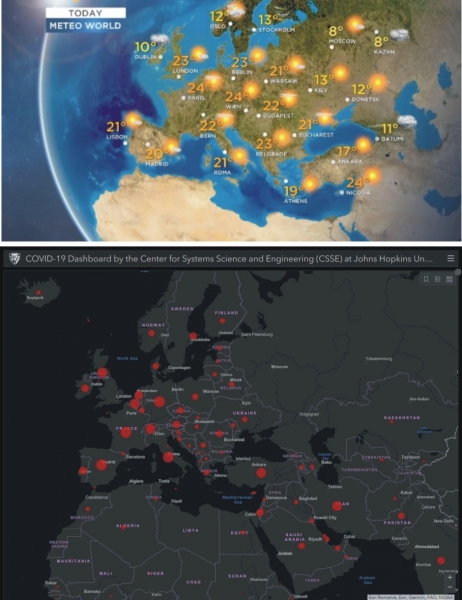
Europe
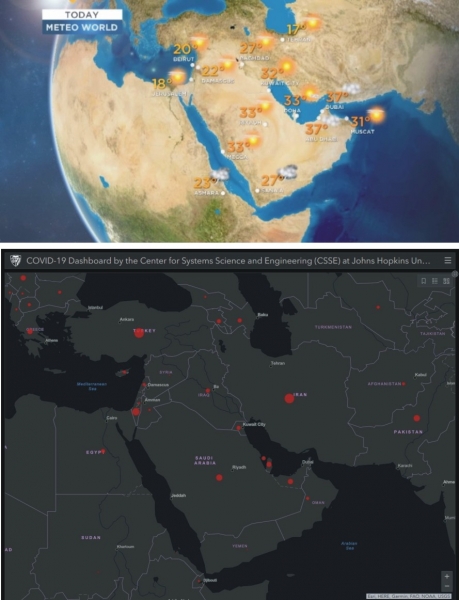
Near East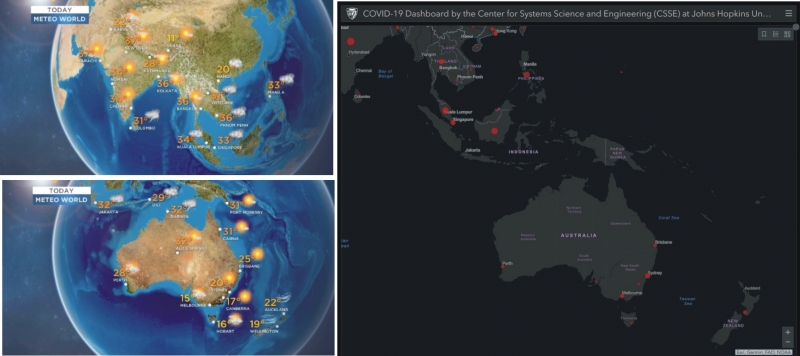
Australia













Leave a review